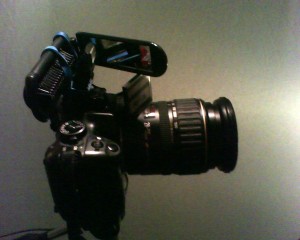Hi friends,
I recently read The 4-Hour Workweek (Expanded Edition) by Timothy Ferris. Upon finishing the book, I restarted at the beginning to go through it, step by step, to try my own personal experiment of “Lifestyle Design.” I have no idea where this journey will take me, nor how successful it will be. Actually, I take that back – it’s already successful.
by Timothy Ferris. Upon finishing the book, I restarted at the beginning to go through it, step by step, to try my own personal experiment of “Lifestyle Design.” I have no idea where this journey will take me, nor how successful it will be. Actually, I take that back – it’s already successful.
I learned about this book 9 months ago when doing research in creating a successful blog. In the sense of making money, this blog has been largely a failure. In the other sense it has been very successful learning tool, and a push to get me in the right direction.
A few months ago I started my first full-time job after college. I quickly found out that I have very little time to do the very long list of things I want to do in my life and I was on the verge of starting to hack and slash that list down. In the meantime, my job has shown me how to hack and slash unimportant things which consume time and add little value. The Four Hour Work Week is basically centered around this concept, so these skills both read and learned hands-on from my job combine together to give me a complete lesson on what’s important and what causes unnecessary “noise” in my life. I should mention at this point another influence recently has been Rework . The job and the two books have given me a lot to think about in recent days, particularly in pursuit of the lifestyle I want to live.
. The job and the two books have given me a lot to think about in recent days, particularly in pursuit of the lifestyle I want to live.
So here I’ve found myself with both knowledge and motivation to rework my lifestyle, and pursue the concepts of Lifestyle Design. In the sense that this blog has both been a success and a failure, I expect that this initiative will be a similar experience. I find that when we undertake these types of projects (or any project for that matter) there is both success and failure, which usually is determined by not really knowing what we get ourselves into. If I fail, it’s only because I didn’t know what I was aiming for. Likewise, my successes will partially be hitting targets I didn’t know I was aiming for.
So where am I at now? Well, I’ve taken a few steps to start laying out the groundwork, and this is where I’ve already met some success.
If you haven’t yet read the book, the next part may be a bit confusing. I’m going to write it assuming you have read the book so I don’t waste time explaining the concepts. After all, I’m not here to rewrite the book. I’m just giving a statement of my experience thus far.
D is for Definition
I’ve basically completed this part of the book. I haven’t completely hashed out my dreamlines yet, but I’ve been brewing on them for a few days (and yeah, every day I think of more things that I want to do). I know the big ticket ones and the costs involved. I’m really content with my current budget in a lot of ways, so this is the base for my Target Monthly Income. There are a few additions though – I’d like to get all my debts paid off within 12 months. I’d like to buy a car in 3 months with no additional financial load to my lifestyle. So my TMI is what I currently make, plus an additional amount to cover the vehicular expense and student loan debts.
Those are the “Having” things. Being is a little trickier. Through thinking about my dreams and aspirations, I realized that what I’ve always to be was an inventor. I never did my engineering degree with the aspirations of being a staff engineer. I’ve always just wanted to follow my creativity and insipration wherever it would take me. So this is one of the big “being” things – an inventor. This is actually not too bad. it will take some initial startup costs, but if my goal is to be an inventor, then it shouldn’t be too difficult to turn any given invention into a “Muse” in and of itself. Thus, if I get my first muse set up and running (and it’s successful enough) then that will enable me to pursue this dream of being an inventor and to follow my whims. I also want to learn to play a musical instrument and learn a new language. I want to learn new forms of partnered dance, as well. I enjoy swing and blues, but I want to expand my reach.
So on to the last one – “doing”. Well this one is easy for me, there’s a lot of things I want to do – Skydiving, hang gliding, race in the Baja 1000. Oh, also I ‘ll use Tim’s example and add “find smart and gorgeous girlfriend” to my list, too. :)
Comfort Challenge #1 – Eye contact.
This has been the biggest success I’ve had so far. I’ve been trying to act out the book as a workbook (on that note, I’ll say that services like evernote are a lot less useful without a smart phone. Tim advocates “killing your crackberry” but at the same time, these services are nearly useless without an all-in-one device like that. Using my DSLR camera is pretty pointless for evernote. And inconvenient. And it takes up a lot of disk space. The bane of Lifestyle Design is NOT the smartphone – it’s e-mail and being constantly connected to that. Turn off e-mail push. If you still don’t have the self control, then get rid of the electronic leash, but for me it’s worth having multi-functional devices.)
Ok, so I digressed a lot – let me get back on subject: Eye contact. This is the first comfort challenge and one that I’ve had a lot of success with. The simple act of making – and holding – eye contact with people in everyday life, especially people that intimidate me makes me much more confident. It’s a big difference. I just feel better about myself and more confident. Being able to hold eye contact with someone until they break it not only made me more confident, but also made me realize how frequently I usually break eye contact first. I will definitely continue to work this comfort challenge into my everyday life, even though I’ve already completed it.
E is for Elimination
I haven’t got into this chapter too much yet, however I did start cleaning out the clutter from my life shortly after starting the book. I’ve been focusing on selling things that I don’t use, and over the past week alone I’ve made about $150. I’ve still got a $1,000 bicycle to get rid of and a few other things that should pull in some good money. Just today I donated clothes I never wear to the Salvation Army, and brought my old skis to a used sporting goods store to sell on consignment.
I know that in the coming weeks there are going to be some bigger challenges. It’s felt so good to actively work through this book so far (on that note I just remembered I sent someone an apology letter that was 10 years overdue, simply because I’m working through this book). I’m more confident, and feel better about myself and happier in general. I have less clutter, less noise, and less to worry about. I’m quicker to make decisions, and focus on the things that matter. I used to fret about every little detail, and be very meticulous to make sure that everything was all taken care of. This often would result in neglecting other things completely, and now I’m finding a lot of comfort in just letting unimportant details slide.
Once again – I know it’s going to get tougher. There’s a comfort challenge or two that I’m legitimately nervous about, but having actively worked through the first comfort challenge, and actively done some action items, I’m pumped up and confident to charge headlong into what’s coming down the line. I’ve felt nothing but good from working through this book so far, and I can only imagine that successfully completing future action items and comfort challenges will also feel good.
On a final note that I don’t think I’ve covered yet: Reading this book has definitely made me more effective at work. It has reinforced concepts and management strategies that are practiced at the company, and given me insight into why certain decisions are made. It has also pushed me to learn how to make decisions quickly, and focus on what really matters. My job involves working with a lot of different people, and while I’m not a manager, I do have some control over a few interns. The concepts in this book have helped me to steer them to be more effective. It has also helped me recognize ways I can exercise their strengths to make the entire team more effective. I think overall my output is higher and the quality of work hasn’t significantly gone down. This is all due to applying concepts of the “80/20 principle” and focusing my efforts accordingly.
Ok, that’s it for now. Even if I put the book down now, it will already have had a positive impact on my life. I’m looking forward to the future :)
which in a way provides a polar opposite view. Crush It tells you to work longer and harder than ever before, but it tells you to work on what you love. The 4-Hour Workweek tells you to work less, but work on something you don’t love – for the purpose of freeing up your time to do that which you love. Crush It tells you to be extremely in-tune with social networks, and that every single person is important and should be treated as such. The 4-Hour Workweek tells you to disconnect from the network, drop social networks in general, and cater yourself only to the customers that result in the highest return, for the minimum effort.


